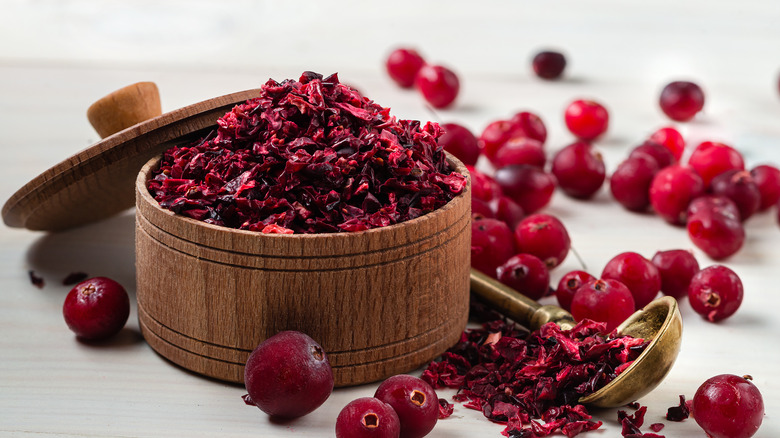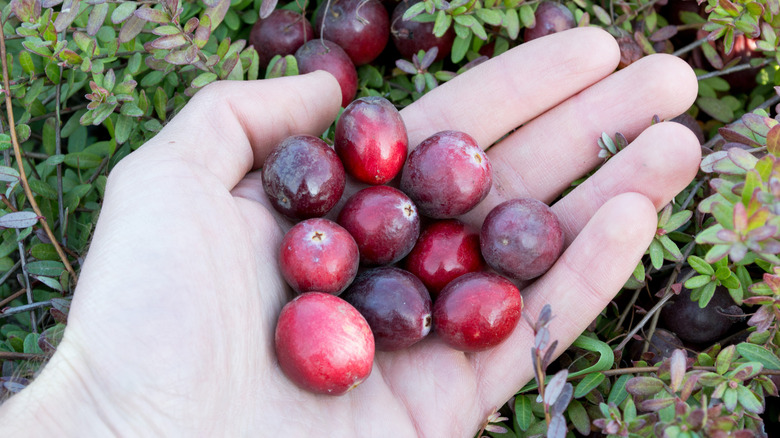The Simple Test You Can Do To See If Your Cranberries Are Perfectly Ripe
While cranberries are possibly the tartest of all berries, their sweet spot certainly lies in their versatility. Beyond their notoriety as a Thanksgiving mainstay, these bright berries can be used in a variety of recipes. From sweets like tarts and muffins, to savory mains like meatballs, cranberries can lend a unique flavor to favorite dishes and even cocktails.
Beyond how to incorporate cranberries into your sweet and savory foods, there is plenty to learn and know about the mighty cranberry, including its many health benefits. Packed with antibiotics, these little red spheres are touted for their ability to ward off colds and urinary tract infections, improve heart and digestive health, and even prevent cancer (via Cleveland Clinic).
Now that you are aware of the many uses and benefits of this superfood, it's time to address perhaps the most elusive aspect of cranberries: How to know when they are ripe.
It's all about the bounce
Often it's fairly evident if a fruit is not ready to be eaten or is overripe. Who hasn't encountered a still-solid avocado or a browned banana? However, cranberries can be a bit more mysterious in terms of their ripeness. After all, how many have laid eyes on moldy cranberries, or known intuitively that a cranberry was beyond or below its peak?
The sneaky secret to knowing if cranberries are at their best is to check their bounce. The "bounce test" is attributed to New Jersey farmer John "Peg-Leg Webb, who, in 1880, spilled some cranberries down the stairs and unwittingly discovered that the better cranberries bounced to the bottom, while the bruised ones remained on the top steps (via Eating Well). All these years later, farmers still use the bounce test to determine the best cranberries, albeit by a more modern method known as the bounce board separator.
How much bounce is best? Wisconsin is considered to be the top producer of cranberries in the United States (via USDA), and according to the Wisconsin Ag in the Classroom Program's Time For Cranberries Educators Guide, "In order for a cranberry to be considered ripe, it must bounce one foot off the ground."
Those are pretty high standards for any fruit, but if cranberry ripeness is your goal, a big bounce is best.

